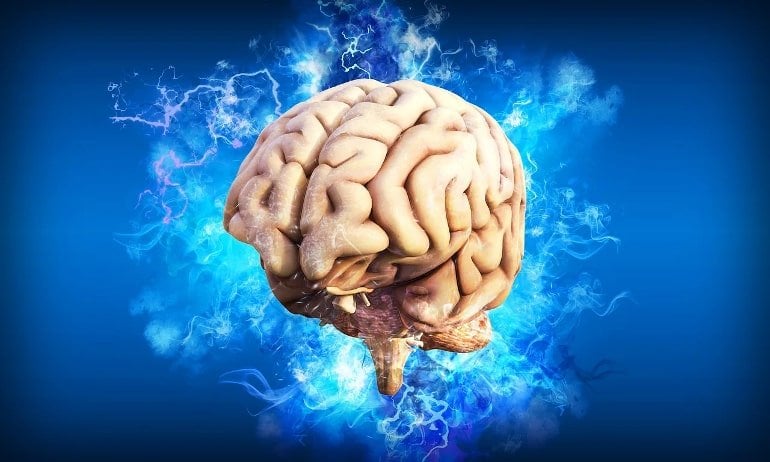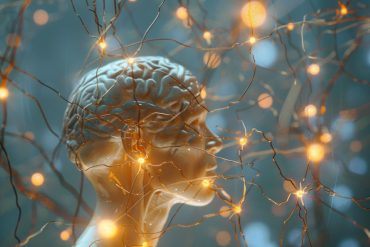Summary: APOE proteins were enhanced in the brains of patients with dementia, even when they did not carry the Alzheimer’s associated gene.
Source: University of Kentucky
A team of researchers from the University of Kentucky’s Sanders-Brown Center on Aging (SBCoA) is working to identify new proteins that are destructive to the brain. They know that about 25% of individuals, and 50% of individuals with Alzheimer’s disease, have the genetic mutation APOE ε4 allele — a known risk factor for the disease.
Through a recent study, researchers were surprised to find that even in the brains of patients without the disease-driving mutation, ApoE proteins were enhanced in dementia.
Their findings appear in The American Journal of Pathology.
“Dementia is very complex, but you can simplify it: the disease is caused by ‘gloppy proteins’ in the brain,” said lead investigator Peter T. Nelson, M.D., Ph.D., director of neuropathology at SBCoA and a professor in UK’s Department of Pathology. “I’m not making light of it; these ‘sticky’ misfolded proteins often end up destroying the brain, the mind, the memories and everything else for millions of people who suffer from dementia. We want to understand specifically which proteins are the problem.”
The investigators looked at 40 participants from the University of Kentucky Alzheimer’s Disease Center autopsy cohort — Kentucky residents who have agreed to donate their brains at time of death. The subjects ranged from cognitively normal to severe dementia. Although previous studies have examined the human amygdala proteome, none have reported on a sample of this size with dementia subjects and control subjects for comparison.
As anticipated, portions of proteins previously associated with neurodegenerative diseases were found in the brains of patients with dementia, including proteins called Tau (associated with neurofibrillary tangles), Aβ (associated with amyloid plaques), and α-Synuclein (associated with Lewy Body disease). Aβ and α-Synuclein correlated strongly with clinical diagnosis of dementia. Tau and Aβ proteins, but not α-Synuclein, were occasionally detectible in cognitively normal subjects and those with mild cognitive impairment. Overall, Nelson says the findings were in line with their expectations.
“Like many big stories in science, it is not entirely novel. Other researchers have produced similar results,” said Nelson. “However, this finding strongly underscores the potential for ApoE to promote dementia, even in persons that don’t carry the ‘bad’ gene.”

The data revealed a close correlation between dementia diagnosis and the detection of ApoE peptides in the brain. The correlation with dementia for ApoE was even stronger than that seen for Tau, Aβ, or α-Synuclein. Researchers found that the ApoE peptides were significantly enriched even in dementia patients who lack the APOE ε4 allele. The results emphasize the ApoE protein may play an active disease-driving role in its own right, rather than just being an “upstream” genetic risk factor.
“Our study adds to an evolving appreciation of multiple misfolded proteins in the human brain and moves the field forward by emphasizing that ApoE may be a stong contributor to the dementia prototype, even in individuals who do not have the disease-driving version of the APOE gene,” said Nelson. “Even in persons lacking the APOE ε4 allele, ApoE may indeed be among the most impactful ‘gloppy proteins’ in aging brains.”
Funding: Research reported in this publication was supported by the National Institute on Aging of the National Institutes of Health under Award Numbers P30AG072946, R01AG042419, R01AG042475, R01AG061111, R01 AG057187 R21AG061551, R01AG060056, R01AG062550; the National Institute of Neurological Disorders and Stroke of the National Institutes of Health under Award Numbers RF1NS118584 and R21NS095299; and the National Center for Research Resources of the National Institutes of Health under Award Number S10 RR029127. The content is solely the responsibility of the authors and does not necessarily represent the official views of the National Institutes of Health.
This material is based upon work supported by the Department of Veterans Affairs, Veterans Health Administration, Office of Research and Development, Biomedical Laboratory Research and Development.
Note: The views expressed in this article are those of the authors and do not necessarily reflect the position or policy of the Department of Veterans Affairs or the United States government.
About this dementia research news
Author: Marc Whitt
Source: University of Kentucky
Contact: Marc Whitt – University of Kentucky
Image: The image is in the public domain
Original Research: Open access.
“Apolipoprotein E Proteinopathy Is a Major Dementia-Associated Pathologic Biomarker in Individuals with or without the APOE Epsilon 4 Allele” by Peter T. Nelson et al. American Journal of Pathology
Abstract
Apolipoprotein E Proteinopathy Is a Major Dementia-Associated Pathologic Biomarker in Individuals with or without the APOE Epsilon 4 Allele
The amygdala is vulnerable to multiple or “mixed” mis-aggregated proteins associated with neurodegenerative conditions that can manifest clinically with amnestic dementia; the amygdala region is often affected even at earliest disease stages.
With the original intent of identifying novel dementia-associated proteins, the detergent-insoluble proteome was characterized from the amygdalae of 40 participants from the University of Kentucky Alzheimer’s Disease Center autopsy cohort.
These individuals encompassed a spectrum of clinical conditions (cognitively normal to severe amnestic dementia). Polypeptides from the detergent-insoluble fraction were interrogated using liquid chromatography-electrospray ionization-tandem mass spectrometry. As anticipated, portions of peptides previously associated with neurologic diseases were enriched from subjects with dementia.
Among all detected peptides, Apolipoprotein E (ApoE) stood out: even more than the expected Tau, APP/Aβ, and α-Synuclein peptides, ApoE peptides were strongly enriched in dementia cases, including from individuals lacking the APOE ε4 genotype. The amount of ApoE protein detected in detergent-insoluble fractions was robustly associated with levels of complement proteins C3 and C4. Immunohistochemical staining of APOE ε3/ε3 subjects’ amygdalae confirmed ApoE co-localization with C4 in amyloid plaques.
Thus, analyses of human amygdala proteomics indicate that rather than being only an “upstream” genetic risk factor, ApoE is an aberrantly aggregated protein in its own right, and show that the ApoE protein may play active disease-driving mechanistic roles in persons lacking the APOE ε4 allele.






